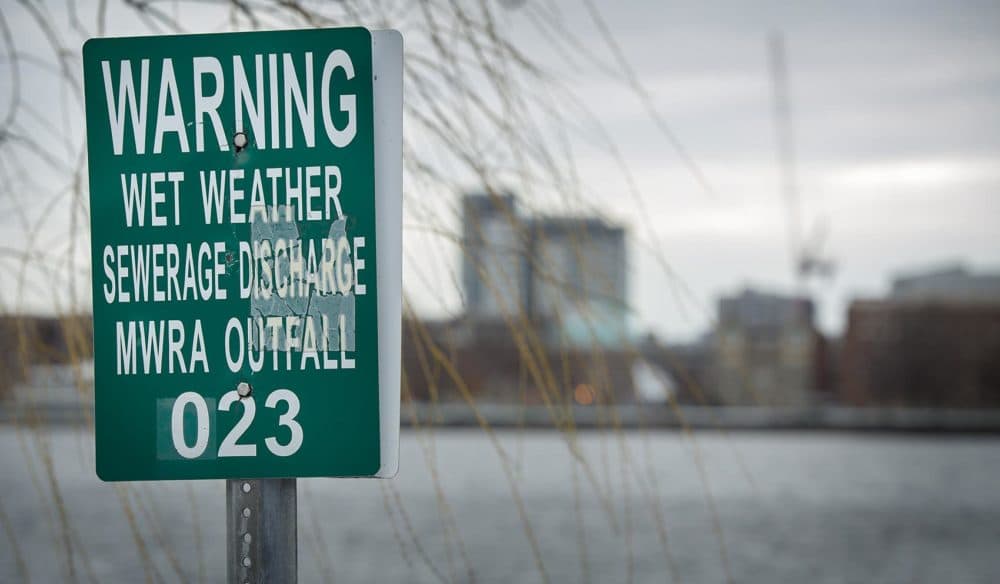Advertisement
Sewer Overflows Return As Systems Are Overwhelmed

The remnants of Hurricane Ida brought heavy rain and serious flooding to parts of Massachusetts this week, and also led to sewage being dumped into public waterways.
Within the Massachusetts Water Resources Authority service zone alone, 11 instances of sewage and rainwater being expelled from the wastewater system into bodies of water were reported between about 7 p.m. Wednesday and 9 a.m. Thursday, the agency reported.
Just how much was discharged remains to be determined, the MWRA said, but some discharges lasted as long as 14 hours.
Some Massachusetts cities and towns have combined sewer systems, in which surface runoff is put through the same pipes that carry sewage. Heavy rain can overwhelm the systems.
To prevent sewage backups into homes and streets, combined sewer overflows (CSOs) are built into the wastewater systems to discharge some of the sewage and rainwater into the nearest body of water.
Though 93 percent of its CSO flows are treated through screening, disinfection and dechlorination, the MWRA said, CSO discharges can carry bacteria and cause algae blooms. The issue is a major concern along the Merrimack River and in the Greater Boston area.
People who swim after rainstorms, "do in fact have adverse public health outcomes" because of CSO releases, Secretary of Energy and Environmental Affairs Kathleen Theoharides said last month.
On Thursday, after getting nearly 10 inches of rain, the city of New Bedford — which has a combined sewer system — announced that its beaches would be closed to swimming and that water quality will be tested daily.
This summer has already been a busy one for the MWRA and CSO releases. In the 13 days between June 30 and July 12, the MWRA's wastewater system received 11.17 inches of rainfall — about a quarter of the annual average rainfall, Executive Director Fred Laskey told the MWRA Board last month.
A succession of storms limited the ability of the system to fully recover before more water arrived, leading to numerous discharges from CSOs. During those 13 days, the MWRA reported 29 CSO discharges of an estimated 309.15 million gallons into waterways like the Charles River, Mystic River and Fort Point Channel.